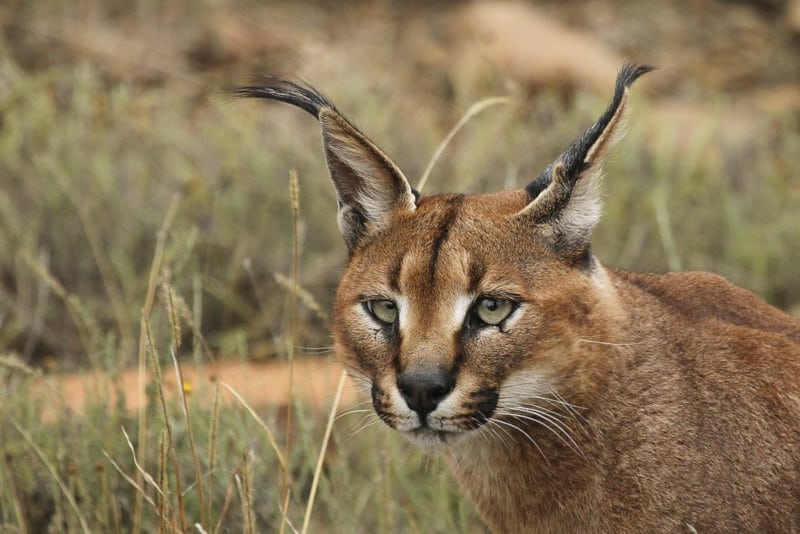
Caracal Facts
- Firstly, while often confused with the Lynx, the rather gorgeous Caracal actually bears a closer relationship to other felines.
- However, unlike other wild felines, this beautiful animal has, sadly, been tamed and used for hunting for thousands of years.
- Also setting it apart from related species is the fact that it still, for the moment, exists in reasonably large numbers in the wild.
- Consequently, for this reason, along with inhabiting a fairly wide range, the IUCN currently lists the caracal as a species of Least Concern.
- Yet, that may change soon, since it presently finds itself facing a rapid reduction of its range of habitation, due to agricultural expansion.
Related Articles
Caracal Physical Description
The truly gorgeous Caracal ranks as a rather medium-sized wild feline, and displays no discernible degree of sexual dimorphism.
It also has a rather stocky build, relative to most wild felines. Furthermore, an average height at the shoulder equals about 20 in (50 cm), and a maximum weight is 40 lb (18 kg).
In addition, in coloring, individuals most commonly display shades of tan or sandy-red. However, slightly reddish markings appear on various part of the body.
The most visually striking feature, however, remains the strongly tufted ears, strongly resembling many types of lynxes.
- Kingdom: Animalia
- Phylum: Chordata
- Class: Mammalia
- Order: Carnivora
- Family: Felidae
- Genus: Caracal
- Species: C. caracal
Caracal Distribution, Habitat, and Ecology
The magnificent Caracal actually inhabits an extremely wide range, which includes portions of Africa, the Middle East, and Asia, including India.
It has also proven to be highly adaptable, and thrives in habitats that include forest, savannas, marshes, and even semi-desert regions.
Most commonly, it prefers areas with low rainfall and copious cover, yet also inhabits altitudes of up to 9,800 ft (3,000 m).
Like other species, it also has a carnivorous and primarily feeds on birds, rodents, and other smaller mammals.
However, if smaller prey remains absent, individuals have been known to prey on larger animals, such as sheep and goats.
Species Sharing Its Range
Check out our other articles on 3 Marvelous Mammals of Mongolia, Australian Sea Lion, Lake Maracaibo, Sturt’s Desert Pea, Orange-belted Bumblebee, Hellbender Salamander, Green Iguana
